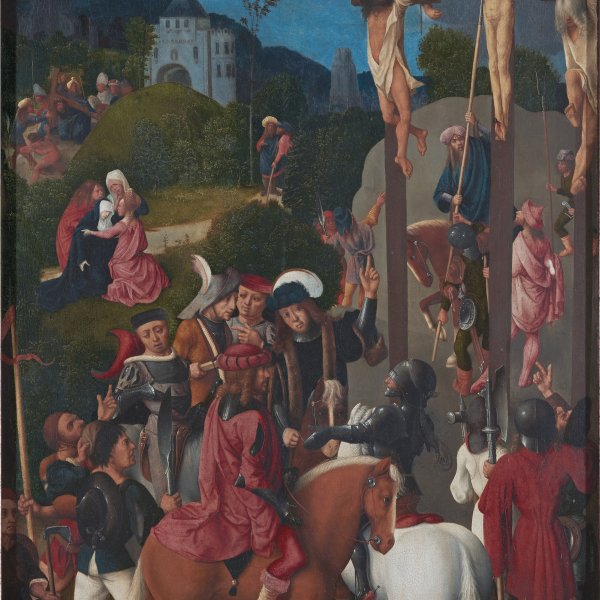Master of the Virgo inter Virgines
This Netherlandish painter and printmaker was active in Delft in the late 15th century. His name derives from an altarpiece of The Virgin with Saint Catherine, Saint Cecilia, Saint Ursula and Saint Barbara (Rijksmuseum, Amsterdam), formerly in the convent at Koningsveld near Delft. In 1903 Friedländer was the first art historian to attribute a group of works to his hand and to single him out as the most elegant and realistic of the Early Netherlandish painters. That author also considered the artist to be the most important of his period and a pioneer of the Dutch school.
The Master of the Virgo inter Virgines has been identified as Dirc Jansz. (active between 1474 and 1495), one of two artists referred to in the Delft city archives as active as a painter and printmaker during the last years of the 15th century. His work reflects a knowledge of the leading southern Netherlandish painters, suggesting that he travelled to that region. His style is notably individual and his figures are expressive to the point of hyper-realism. The Master of the Virgo inter Virgines developed a specific typology for these figures, with high, pronounced cheekbones, long necks and prominent foreheads. Notable works by this painter include The Annunciation (Boijmans- Van Beuningen Museum, Rotterdam), The Crucifixion Triptych (Bowes Museum, Barnard Castle), The Crucifixion (Galleria degli Uffizi, Florence), and The Adoration of the Magi Triptych (Carolino Augusteum Museum, Salzburg). The provenances of these works suggest that they were foreign commissions, indicating that this artist worked beyond local boundaries. His masterpiece is The Burial of Christ in the Walker Art Gallery, Liverpool.





